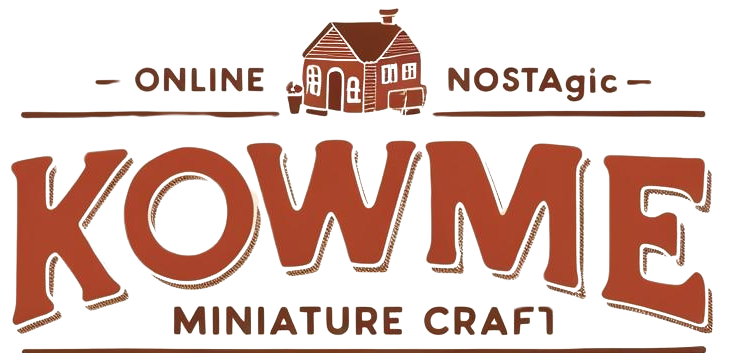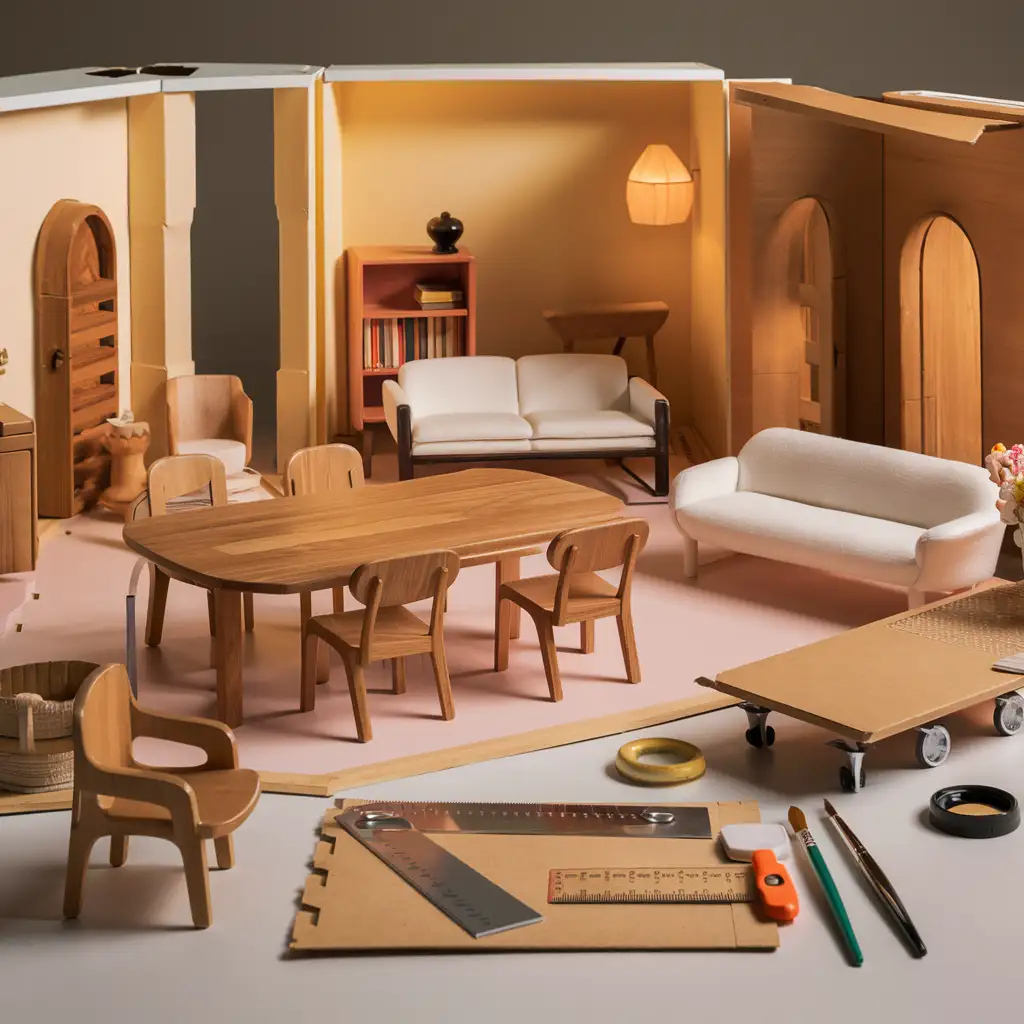Crafting dollhouse furniture is a rewarding and creative endeavor, but choosing the right material can be a challenging decision for both beginners and experienced crafters. Each material—wood, plastic, and cardboard—has unique advantages and drawbacks that influence the final look, durability, and usability of your miniature furniture. In this guide, we’ll explore these materials in detail to help you make the best choice for your dollhouse furniture projects.
Why Your Dollhouse Furniture Material Matters
The material you select for your dollhouse furniture directly impacts its durability, aesthetic appeal, and ease of crafting. Whether you’re designing furniture for a collector’s piece or a child’s toy, understanding the strengths and weaknesses of wood, plastic, and cardboard will ensure your dollhouse furniture meets your expectations and needs.
Wood: The Timeless Choice
Why Wood is Great for Dollhouse Furniture
- Exceptional Durability: Wood is a strong and long-lasting material, making it perfect for furniture that will be handled frequently or preserved as a keepsake.
- Realistic Aesthetic: With its natural grain and texture, wood adds authenticity and a premium feel to miniature furniture. It can be stained, painted, or left natural for versatile finishes.
- Highly Customizable: Wood is easy to carve, cut, and sand, allowing for intricate details and personalization.
Challenges of Using Wood
- Higher Cost: Quality woods like balsa or basswood can be more expensive than plastic or cardboard.
- Skill and Tools Required: Crafting wooden furniture often requires specialized tools like saws and sandpaper, as well as a certain level of craftsmanship.
- Heavier Weight: Wooden furniture is heavier than alternatives, which may not be ideal for delicate dollhouses or portable setups.
Plastic: A Practical and Modern Option
Advantages of Plastic Dollhouse Furniture
- Budget-Friendly: Plastic is generally more affordable than wood, making it an excellent choice for beginners or large projects.
- Lightweight and Portable: Its lightweight nature makes plastic furniture easy to handle and move, especially for children’s dollhouses.
- Wide Variety: Plastic furniture is available in a range of pre-made designs, colors, and shapes, saving time and effort.
Drawbacks of Plastic Dollhouse Furniture
- Less Realistic: Plastic lacks the charm and authenticity of handcrafted wooden furniture.
- Environmental Impact: As a non-biodegradable material, plastic is less eco-friendly than wood or cardboard.
- Limited Customization: Modifying plastic furniture can be difficult without specialized tools, limiting its flexibility for DIY projects.
Cardboard: The Eco-Friendly DIY Favorite
Strengths of Cardboard Dollhouse Furniture
- Cost-Effective: Cardboard is inexpensive and widely available, making it ideal for budget-conscious crafters.
- Eco-Friendly: As a recyclable and biodegradable material, cardboard is a sustainable choice for environmentally conscious creators.
- Easy to Work With: Lightweight and simple to cut, cardboard is perfect for DIY enthusiasts looking to create furniture quickly and creatively.
Weaknesses of Cardboard Dollhouse Furniture
- Fragility: Cardboard is less durable than wood or plastic and may not withstand frequent handling.
- Moisture Sensitivity: Exposure to water or humidity can cause cardboard to warp or disintegrate, requiring careful sealing or placement in dry environments.
- Shorter Lifespan: Over time, cardboard furniture may lose its structural integrity, making it less suitable for long-term projects.
Comparing Dollhouse Furniture Materials: Wood, Plastic, and Cardboard
To make the best choice for your dollhouse furniture, consider these factors:
- Durability: Wood is the most durable, followed by plastic, while cardboard is the least durable.
- Cost: Cardboard is the most affordable, plastic is moderately priced, and wood is the most expensive.
- Appearance: Wood offers the most realistic and high-quality look, while plastic and cardboard may appear less authentic.
- Eco-Friendliness: Cardboard is the most sustainable option, followed by wood, with plastic being the least eco-friendly.
- Customization: Wood provides the most flexibility for intricate designs, followed by cardboard, while plastic offers limited customization.
Final Thoughts: Finding the Right Material for Your Dollhouse Furniture
Choosing the right material for your dollhouse furniture depends on your goals, budget, and crafting expertise.
- Choose wood for timeless, durable, and highly customizable pieces that offer a realistic aesthetic.
- Opt for plastic if you’re looking for budget-friendly, lightweight, and pre-made furniture options.
- Go with cardboard if you’re a DIY enthusiast or an eco-conscious crafter seeking a cost-effective and creative solution.
By understanding the pros and cons of wood, plastic, and cardboard, you can craft beautiful and functional dollhouse furniture that enhances your miniature world while reflecting your unique style.
Happy crafting!


